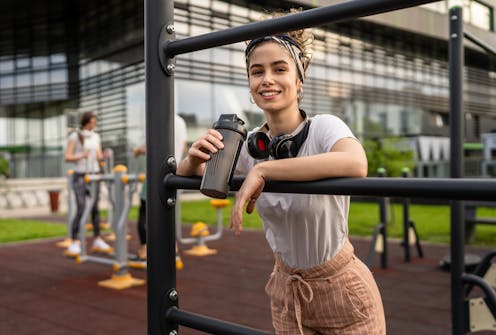Source: The Conversation – (in Spanish) – By Kevin Parthenay, Professeur des Universités en science politique, membre de l’Institut Universitaire de France (IUF), Université de Tours
The United Nations Ocean Conference (UNOC 3) will open in Nice, France, on June 9, 2025. It is the third conference of its kind, following events in New York in 2017 and Lisbon in 2022. Co-hosted by France and Costa Rica, the conference will bring together 150 countries and nearly 30,000 individuals to discuss the sustainable management of our planet’s oceans.
This event is presented as a pivotal moment, but it is actually part of a significant shift in marine governance that has been going on for decades. While ocean governance was once designed to protect the marine interests of states, nowadays it must also address the numerous climate and environmental challenges facing the oceans.
Media coverage of this “political moment” however should not overshadow the urgent need to reform the international law applicable to the oceans. Failing that, this summit will risk being nothing more than another platform for vacuous rhetoric.
To understand what is at stake, it is helpful to begin with a brief historical overview of marine governance.
The meaning of ocean governance
Ocean governance changed radically over the past few decades. The focus shifted from the interests of states and the corresponding body of international law, solidified in the 1980s, to a multilateral approach initiated at the end of the Cold War, involving a wide range of actors (international organizations, NGOs, businesses, etc.).
This governance has gradually moved from a system of obligations pertaining to different marine areas and regimes of sovereignty associated to them (territorial seas, exclusive economic zones (EEZs), and the high seas) to a system that takes into consideration the “health of the oceans.” The aim of this new system is to manage the oceans in line with the sustainable development goals.
Understanding how this shift occurred can help us grasp what is at stake in Nice. The 1990s were marked by declarations, summits and other global initiatives. However, as evidenced below, the success of these numerous initiatives has so far been limited. This explains why we are now seeing a return to an approach more firmly rooted in international law, as evidenced by the negotiations on the international treaty on plastic pollution, for example.
The “Constitution of the Seas”
The law of the sea emerged from the Hague Conference in 1930. However, the structure of marine governance gradually came to be defined in the 1980s, with the adoption of the United Nations Convention on the Law of the Sea (UNCLOS) in 1982.
UNOC 3 is a direct offshoot of this convention: discussions on sustainable ocean management stem from the limitations of this founding text, often referred to as the “Constitution of the Seas”.
UNCLOS was adopted in December 1982 at the Montego Bay Convention in Jamaica and came into force in November 1994, following a lengthy process of international negotiations that resulted in 60 states ratifying the text. At the outset, the discussions focused on the interests of developing countries, especially those located along the coast, in the midst of a crisis in multilateralism. The United States managed to exert its influence in this arena without ever officially adopting the Convention. Since then, the convention has been a pillar of marine governance.
It established new institutions, including the International Seabed Authority, entrusted with the responsibility of regulating the exploitation of mineral resources on the seabed in areas that fall outside the scope of national jurisdiction. UNCLOS is the source of nearly all international case law on the subject.
Although the convention did define maritime areas and regulate their exploitation, new challenges quickly emerged: on the one hand, the Convention was essentially rendered meaningless by the eleven-year delay between its adoption and implementation. On the other hand, the text also became obsolete due to new developments in the use of the seas, particularly technological advances in fishing and seabed exploitation.
The early 1990s marked a turning point in the traditional maritime legal order. The management of the seas and oceans came to be viewed within an environmental perspective, a process that was driven by major international conferences and declarations such as the Rio Declaration (1992), the Millennium Declaration (2005), and the Rio+20 Summit (2012). These resulted in the 2030 Agenda and the Sustainable Development Goals (SDGs), the UN’s 17 goals aimed at protecting the planet (with SDG 14, “Life Below Water”, directly addressing issues related to the oceans) and the world’s population by 2030.

A weekly e-mail in English featuring expertise from scholars and researchers. It provides an introduction to the diversity of research coming out of the continent and considers some of the key issues facing European countries. Get the newsletter!
The United Nations Conference on Environment and Development (UNCED, or Earth Summit), held in Rio de Janeiro, Brazil, in 1992, ushered in the era of “sustainable development” and, thanks to scientific discoveries made in the previous decade, helped link environmental and maritime issues.
From 2008 to 2015, environmental issues became more important as evidenced by the regular adoption of environmental and climate resolutions.
A shift in UN language
Biodiversity and the sustainable use of the oceans (SDG 14) are the two core themes that became recurring topics in the international agenda since 2015, with ocean-related issues now including items like acidification, plastic pollution and the decline of marine biodiversity.
The United Nations General Assembly resolution on oceans and the law of the seas (LOS is a particularly useful tool to acknowledge this evolution: drafted annually since 1984, the resolution has covered all aspects of the United Nations maritime regime while reflecting new issues and concerns.
Some environmental terms were initially absent from the text but have become more prevalent since the 2000s.
This evolution is also reflected in the choice of words.
While LOS resolutions from 1984 to 1995 focused mainly on the implementation of the treaty and the economic exploitation of marine resources, more recent resolutions have used terms related to sustainability, ecosystems, and maritime issues.
Toward a new law of the oceans?
As awareness of the issues surrounding the oceans and their link to climate change has grown, the oceans gradually became a global “final frontier” in terms of knowledge.
The types of stakeholders involved in ocean issues have also changed. The expansion of the ocean agenda has been driven by a more “environmentalist” orientation, with scientific communities and environmental NGOs standing at the forefront of this battle. This approach, which represents a shift away from a monopoly held by international law and legal practitioners, clearly is a positive development.
However, marine governance has so far relied mainly on non-binding declaratory measures (such as the SDGs) and remains ineffective. A cycle of legal consolidation toward a “new law of the oceans” therefore appears to be underway and the challenge is now to supplement international maritime law with a new set of measures. These include:
-
the adoption of the Agreement on the Conservation and Sustainable Use of Marine Biological Diversity in Areas Beyond National Jurisdiction (known as the BBNJ Agreement) aiming to protect marine resources in the high seas;
-
the negotiation of a treaty on marine plastic pollution, still in progress and not finalized yet;
-
the agreement on fisheries subsidies adopted by the World Trade Organization (WTO) to preserve fish stocks, which so far has failed to be fully implemented;
-
lastly, the Seabed Authority’s Mining Code, designed to regulate seabed mining.
Of these agreements, the BBNJ is arguably the most ambitious: since 2004, negotiators have been working toward filling the gaps of the United Nations Convention on the Law of the Sea (UNCLOS) by creating an instrument on marine biodiversity in areas beyond national jurisdiction.
The agreement addresses two major concerns for states: sovereignty and the equitable distribution of resources.
Adopted in 2023, this historic agreement has yet to enter into force. For this to happen, sixty ratifications are required and to date, only 29 states have ratified the treaty (including France in February 2025, editor’s note).
The BBNJ process is therefore at a crossroads and the priority today is not to make new commitments or waste time on complicated high-level declarations, but to address concrete and urgent issues of ocean management, such as the frantic quest for critical minerals launched in the context of the Sino-American rivalry, and exemplified by Donald Trump’s signing of a presidential decree in April 2025 allowing seabed mining – a decision that violates the International Seabed Authority’s well established rules on the exploitation of these deep-sea resources.
At a time when U.S. unilateralism is leading to a policy of fait accompli, the UNOC 3 should, more than anything and within the framework of multilateralism, consolidate the existing obligations regarding the protection and sustainability of the oceans.
![]()
Kevin Parthenay is a member of the Institut Universitaire de France (IUF).
Rafael Mesquita ne travaille pas, ne conseille pas, ne possède pas de parts, ne reçoit pas de fonds d’une organisation qui pourrait tirer profit de cet article, et n’a déclaré aucune autre affiliation que son organisme de recherche.
– ref. From sovereignty to sustainability: a brief history of ocean governance – https://theconversation.com/from-sovereignty-to-sustainability-a-brief-history-of-ocean-governance-258200











